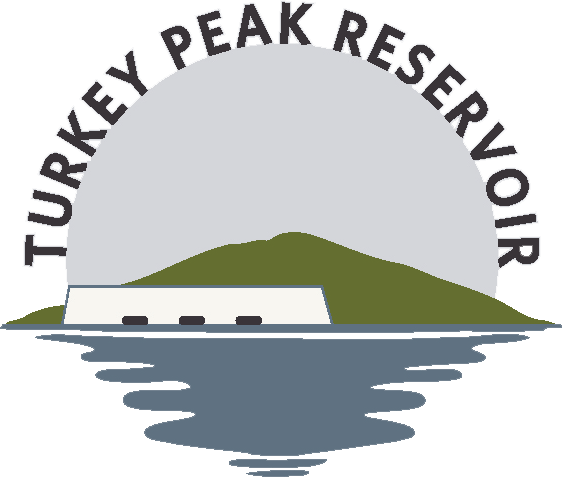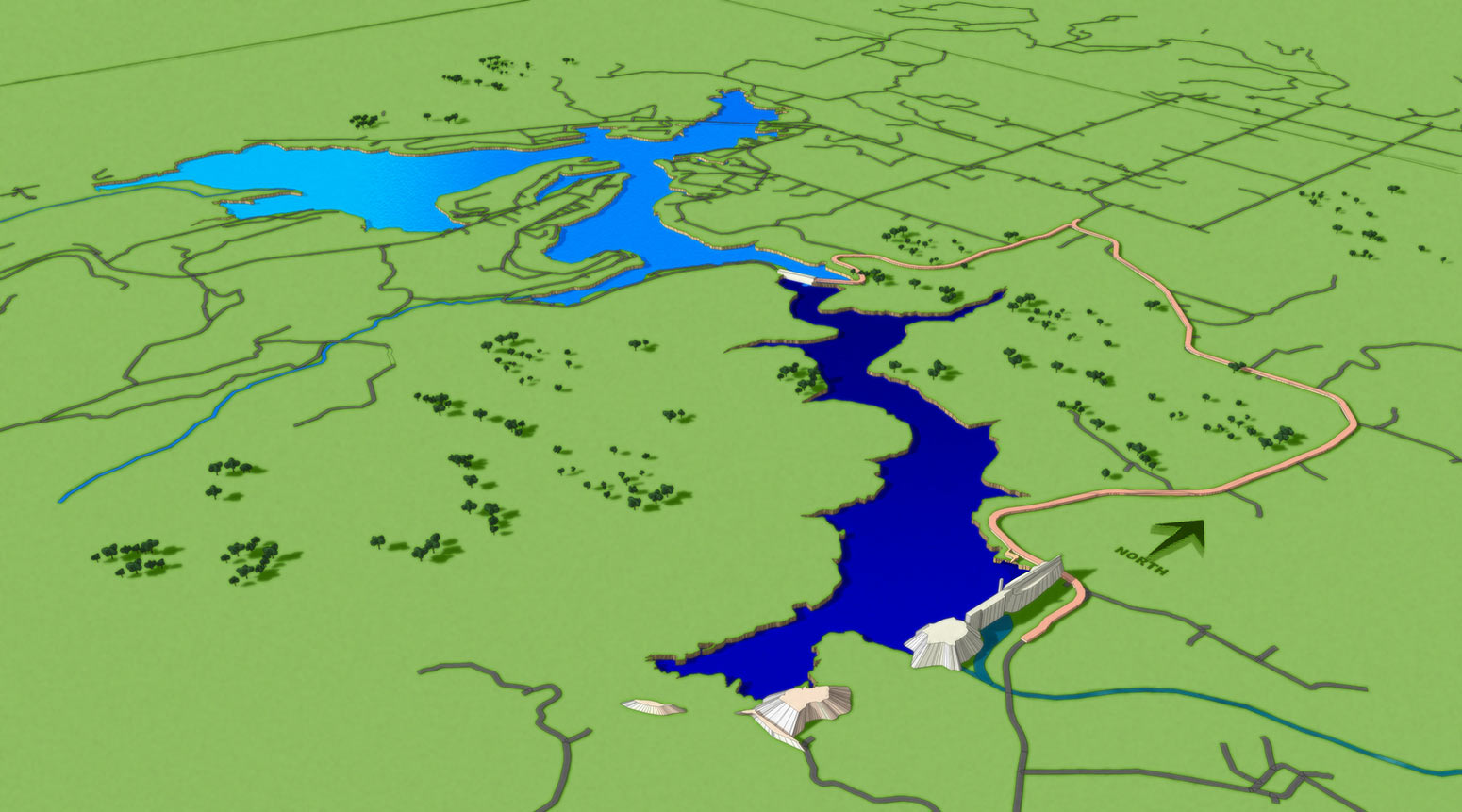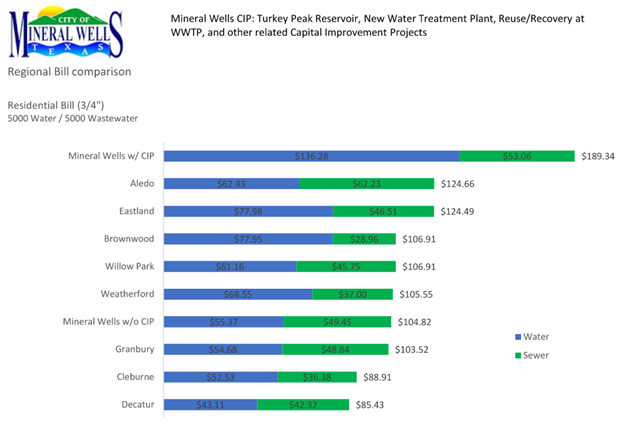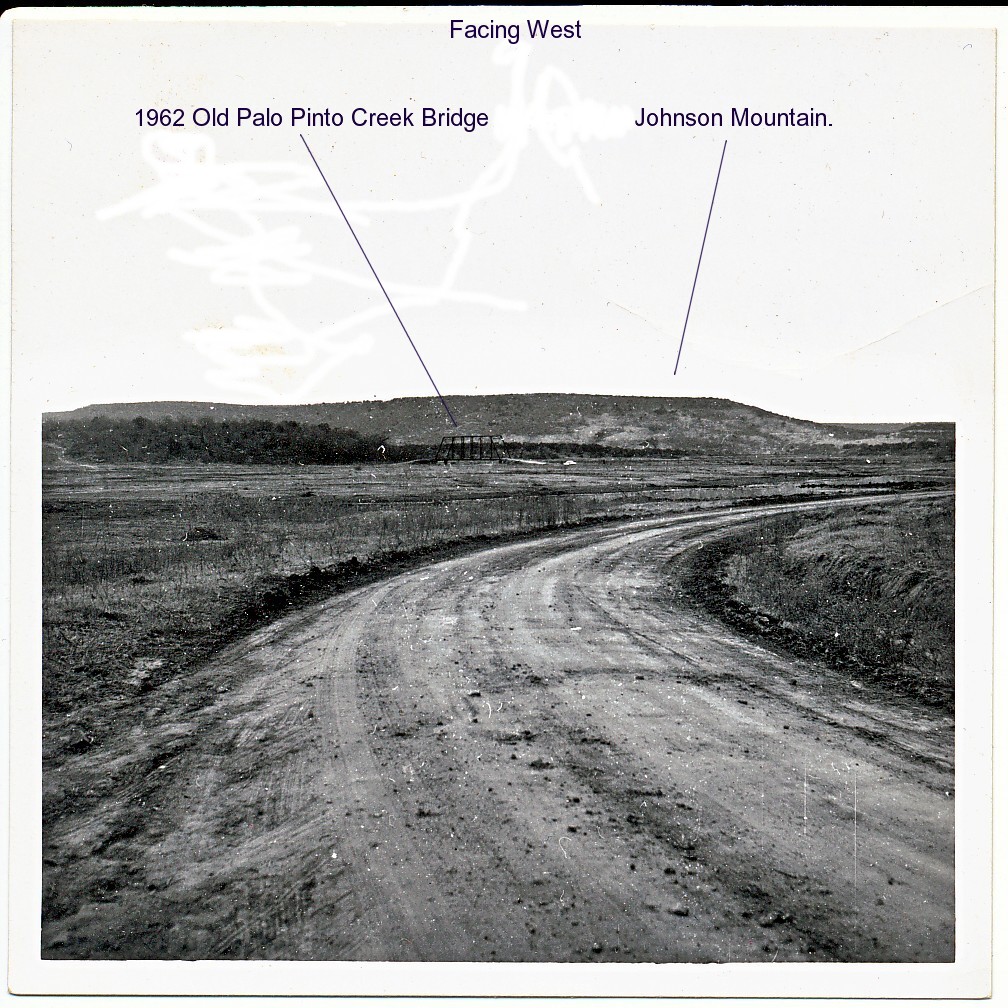NEWS + RESOURCES
NEWS
Press Release: Status Update on the Turkey Peak Reservoir Project
Press Release: Tarleton team to conduct mitigation project ahead of lake
expansion
Press Release: Texas State Water Plan Reaffirms Need for Water Supply
Projects
RESOURCES
Budget documents
Historical documents
Project overview
Landowner Information
Permitting Documents
Water Resources Reports
Contractor Resources
Contractor information and outreach will be provided before the project goes
out for
bidding. Check back for additional information.
FAQs*
*Questions are presented as received from the public without modification.
Why are we selling water to other communities when we don't have enough for our own residents?
Beginning around 1965, the City began selling treated water on a wholesale basis to some communities around the area whose water supplies were insufficient or non-existent. This was due in part, to an ad valorem tax levied on residents of Palo Pinto County served by City supplied water to cover a portion of the cost of constructing Lake Palo Pinto. The property tax levy was by and through Palo Pinto County Municipal Water District No. 1 and the State enabling legislation that created this entity. The remaining costs were recovered through water sales based on rates. Over the years, especially during the 1970’s, as the surrounding area grew the City began contracting with other wholesale customers to assist the water needs in their respective communities. Keep in mind about this same time, the Fort Wolters military base in town closed, which left the City seeking additional sources of revenue to offset the loss from a significant population reduction. At present, the City supplies water to seven wholesale water supply corporations and/or special utility districts. Four of these wholesale customers depend on the City as their sole source of drinking water supply and that is an obligation the City will have to maintain to those communities for the foreseeable future.
Why isn't there a moratorium on new construction?
Most construction of late has been on parcels or lots where previous water service had been provided within the City’s Certificate of Convenience and Necessity (CCN) area. The City would not be able to deny water service in those instances and no moratorium on new construction is in place at this time. While there are two planned housing developments approved presently, the current economy has slowed their actualization. However, the City’s water use estimates and needs against the allocation of water have included those planned housing developments along with both of our historic hotels.
What does the city council actually have to do with Turkey Peak? Is there any responsibility for getting it done? I thought that was the water district.
In accordance with the enabling State of Texas legislation of 1959, the Mineral Wells City Council shall appoint board members to the Palo Pinto County Municipal Water District No. 1 (PPCMWD#1) board. The Council also approves the PPCMWD#1 board’s annual budget. While the PPCMWD#1 is ultimately responsible for developing and maintaining the raw water supply and treatment facility needs for the City under an agreement between these parties, the City and its customers bear the burden of responsibility for the costs associated with the board’s activities and expenditures, including capital improvements like the Turkey Peak Reservoir and other necessary capital improvements (ie. a new water treatment plant, supply pumps, and delivery lines).
While PPCMWD#1 has methodically advanced the Turkey Peak Reservoir project and applied for available funding through State resources. PPCMWD#1 only has three customers, compared with the City’s 6,600+ retail connections plus the wholesale customers, which places the City in a stronger financing position than PPCMWD#1 with regard to the capital improvement projects under consideration. Ultimately, the City’s water customers pay for these improvements whether secured through PPCMWD#1 or with the City assuming the financial burden directly. Due to a shift in market rates and cost escalation, the City could take on the debt load for these capital projects directly and start construction sooner than if the projects remain stalemated while potential State funding sources determine when and if they will fund construction, or any other costs associated. State participation is and has been pursued for low-interest loans on these capital improvements, but none involve forgivable loans, grants with a matching element, or even a gift to defray some of the costs of these projects.
Why haven't the leaks at Hilltop been fixed? When we lose half of what is available it doesn't seem like it would take a lot of common sense to start here?
There are no known leaks of abundance at the Hilltop Water Treatment Plant. The question seems to reference the City’s Annual Water Loss Audit report required by the Texas Commission on Environmental Quality (TCEQ) and submitted via the Texas Water Development Board’s Water Loss Data report. The water loss on a most recent online report (2021) showed water loss at about 31% of the total potable water produced (888MG) from the Hilltop Water Treatment Plant. That total water produced is from the plant after treatment and through the master metering device as the water is leaving the plant and going into the water distribution system to town. The same report also reflects “Revenue” versus “Non-Revenue” water, which with deference to the question is approximately 50%. The most concerning issues on that 2021 report are the losses related to GCD (Gallons per Connection per Day) at 107 GCD, the Real Loss relative to the near 99 GCD, and the Unreported Loss of 164MG or 18% of the Total System Input Volume (888MG) of potable water produced by the Hilltop Water Treatment Plant.
It is true, these “water loss” factors are a concern and at first look are unacceptable. There is a strong belief much of the water loss findings are related to new TCEQ reporting standards and possibly some undetected, subterranean leaks that have yet to surface along the aged infrastructure. The City’s engineers will be reviewing the sourcing, solutions, and provide resolution of this issue within the next few months.
Why aren’t the car washes shut down?
A car wash is an element of business commerce, but more importantly a non-essential service for which consumers have a choice to use or not. Some cities have attempted to regulate carwashes during severe or exceptional drought periods and most carwash owners have been cooperative, including here in town. Under the City’s Water Conservation and Drought Contingency Plan (DCP), all carwashes in town, along with other businesses or industry that use water as principal to their operations, applied for a necessary or essential to business exception to continue operations during the current Stage II drought response. All carwashes in town have submitted their respective applications and were allowed to stay open during Stage II of the DCP. The City has actively monitored business and industrial consumption of water during this same timeframe. Shutting the carwashes down is not a viable solution and the possibility of litigation by these businesses could potentially lead to a viewpoint discrimination lawsuit and prove costly to our taxpayers. Water conservation is a matter of choice even with water restrictions in place. If the drought situation does not improve and the DCP moves to Stage III, additional measures will be placed upon businesses and other commercial enterprises that use water as a business necessity to further reduce consumption where possible.
Why aren't you fining people who are using water outside?
Prior to July 20, 2023, the City and PPCMWD#1 had not begun to blend water or carry out some of the fundamental responsibilities tasked in the DCP. The reason blending had not occurred when the level of Lake Palo Pinto fell to a Stage II DCP condition (861’ MSL) was due to the fact the City nor PPCMWD#1 had secured a water contract from the Brazos River Authority authorizing the use of water from the river for blending or even Reverse Osmosis (RO) purposes. Between April 1st and July 20th PPCMWD#1 and City staff actively sought to secure the water right necessary for this purpose. During this same time, while under Stage II water restrictions, the City Manager advised the Council of this situation and recommended against taking any enforcement action until such time as the City and PPCMWD#1 were in compliance with the DCP.
Following the blending process beginning in late July, enforcement action has been authorized and customers are encouraged to telephone tips of potential violation of the DCP for investigation and action. Calls can be made to the Water Department, Code Enforcement, or the Police Department.
Mineral Wells once got their water from the lake at Mineral Wells State Park. Can that be resourced again since we are in need?
The water in Lake Mineral Wells is insufficient for our consumption daily, monthly, and annual water demands or needs. Lake Mineral Wells is about 1/10 the size of Lake Palo Pinto and is only authorized for about 2,000 acre feet per year for municipal use or consumption. Lake Mineral Wells is our last resort as a backup water supply at present and will be leveraged if the drought reaches extreme emergency or disaster levels.
Will the city submit themselves to an audit process or a mechanism to track all bond revenue to maintain transparency and accountability to the public?
The project manager and engineers will provide online revenue and cost tracking with all projects associated with these capital improvement projects in the proposal. Additionally, all issued Revenue Bonds are reviewed and audited by our Bond Counsel, Financial Advisors, the Texas Attorney General, and if any State or Federal Funding is secured by those levels of government, as well.
Will the city and/or Water District perform a water audit?
City is already required to perform an annual TCEQ water loss audit via TWDB. City is commissioning a separate engineering group to further study, identify, and propose solutions or resolution to the exception water loss areas of concern, specifically loss associated with Gallons per Connection per Day (GCD) and the Unreported Loss rates. PPCMWD#1 does not produce or maintain a public water distribution treatment system and only has three wholesale customers. Consequently, PPCMWD#1 is not required to perform or submit an annual water audit.
Can the City ensure that the Capital Improvement costs are itemized on invoices separately from the consumption of water, etc. on customer bills?
Staff is in consultation with the City’s utility software provider to determine if a feature showing capital improvement costs can be added in addition to water volumetric consumption, sewer, and trash already delineated on the water bills for customers. If the bills can be modified through the billing system in place, capital improvement charges related to each bill will be included.
What suggestions are there to solve water costs to the city for construction, acquisition, repairs etc? What is a fair amount, for residents receiving city water, to pay for water?
It goes without saying, Texas and especially our City are in the midst of another water crisis. The drought cycles in our semi-arid region seem to be more frequent and prolonged when compared with the previous 80-year period. Water infrastructure improvements are expensive everywhere, which may be why there are fewer than 10 planned reservoirs currently on the statewide water planning guide. Unfortunately, with such expensive costs associated with water projects, the rate payers remain ultimately responsible and pay the price. PPCMWD#1 does have ad valorem (property) taxing authority and has leveraged the assessment of such a tax for the construction of Lake Palo Pinto. But whether assessing a property tax or collecting through water rate revenues to pay construction costs associated with the capital improvement projects necessary to secure our water future, the costs will still be borne on the service and residents utilizing the service.
Are businesses paying the same rates as homeowners?
No. Businesses, industry, and wholesale customers pay a “General Service” water rate which is higher than residential service rates.
Is there is a chance that our water bills will soon be as high or higher than my electric bills?
It is unlikely a water bill will exceed that of an electric utility bill at the same property and time in the foreseeable future. While water construction, operational, and treatment costs have increased significantly, the price of water per gallon remains relatively low when compared with other consumables in the marketplace. The current price for 1 gallon of treated water in the City’s rate structure for a residential customer is ½ of 1 percent of 1 penny (0.00524) per gallon. Compare that with the cost of a gallon of milk at over $4 per gallon or even as a travel necessity the per of a gallon of gasoline at $3.50 per gallon. Under the rate structure proposed for consideration to pay for the capital improvements, including the Turkey Peak Reservoir, the price for that same gallon of water would increase to 1.35 percent of 1 penny (0.01352) per gallon.
Would a graduated pay scale be workable? For example, the price increases with each 1000 gallons of consumption? This would help pay for improving the water supply and infrastructure and would also encourage conservation and careful consideration of how we use water.
The City’s water rates have been and will continue to be based upon a graduated rate scale and tiered structure that increases with higher usage and meter size for all customers.
Can we apply the new rate to new meters and grandfather everyone else in?
This action proposes what is termed an “Impact Fee” and was considered during the rate study. There are pros and cons to implementing Impact Fees, with most of the positive benefits yielded after the initial rate structure is in place. The current lake and waterworks system are no longer able to sustain existing consumption demands much less support any growth. Further, the service life of the current lake and water treatment plant were estimated at 50 years back in 1964 when the lake opened. Impact fees can be included in the water rates once capacity and supply are increased to meet current consumption demand requirements and support future growth or needs.
What is the average water bill for towns near us of similar size?
Can we afford the changes that are necessary? Maybe a better question is can we afford to keep kicking the can down the road?
That is a question for the rate payers and the most difficult decision this community and its elected officials will or have faced in the last several decades. The proposed capital improvements have been put off, delayed, deferred, and even neglected for many years now. The question of affordability has not resolved itself all the while waiting has presented significant increases in the cost to secure the water future for this community and all she serves.
As new neighborhoods and people pour into the surrounding areas, why aren’t they passed along the new rates?
All customers, new and/or existing, of City supplied water will pay rates that are established under the new water rate structure. For those customers not inside the City who receive their water from one of the wholesale cooperatives or special utility districts utilizing the City water, they already pay a higher rate than customers in town. The proposed rate increases for the capital improvements, including the Turkey Peak Reservoir, are proportionate and reflect legally permissible water rates for this purpose.
What about emergency situations in the water billing and for economical help to the low-income residents, especially seniors?
Texas Neighborhood Services has a program in place for this purpose and administers the program through the State of Texas Comprehensive Energy Assistance Program (CEAP). TNS currently assists approximately 100 customers within the City. Here is a link to their website to find more information: (
https://txns.org/utility-assistance/)
Has the city had any communication with non-profit entities and churches who regularly assist with utility bills? Is there any communication about how this increase in water rates will affect these entities’ ability to assist?
Yes. Asked and answered above.
As a single person with one income, will the increase in the water bill be $200 or over for me as well or is that price because of a bigger family?
Status or family size is not a factor in the rate structure. Rates are based upon use and application type (ie. Residential, Irrigation, or General Service – Commercial, Industrial, Wholesale). How much water is used through a meter and the meter size is what determines the overall bill.
Once the bonds are paid for, will water rates go back down? Or is this a new “normal”?
The City is required to perform a Rate Study, prepared by a 3rd party professional consultant, every 5 years. Those rate studies take into account the cost of Maintenance and Operations (M&O) along with any debt service carried by the Water Fund or PPCMWD#1. As debt is retired, obviously the rate would be adjusted to reflect the debt service and M&O costs associated within a given internal of time. It is unknown today what the Cost of Living or even Consumer Pricing Index may be in the next 30 or 40 years. But from a simplified perspective, it is safe to assume as the debt retires or is fully retired, with the cost of M&O normalized, that a reduction in the overall cost to the consumer should be appropriate. Many factors, primarily inflation and market conditions much like our national economy faces now, do effect pricing and costs. So, to say “absolutely” the price of water will go down upon full payment of the debt associated with this project is an uncertainty at best.
Has the city considered the societal and economic impact of the exponential water rate increase? How does this affect growth? Is there any concern for “gentrification” and the impact for low-income families?
The impact of the proposed water rates associated with these capital improvements has been a significant concern in consideration of the effect such rates will have on the customers. It is a difficult decision no matter the perspective on the issue. If nothing more is done and the rate is simply more than customers can afford, then obviously we must all accept this is as good as things will ever be. The community will have to make significant adjustments, no matter the income level. Without water, many communities in our immediate area just to the west are no more. While the City can stop selling water to others, a fact that actually decreases the water costs and rates, there is the reality that droughts are a part of life in this region and the aged infrastructure will not repair itself. Not building a new reservoir aside, there remain significant costs for water treatment that must be addressed. Without being able to offer the promise of sustainable water availability and delivery, only the in-town customers will be left to bear that burden.
The issue of addressing the impact of the proposed water rates on low-income customers has been asked and answered. With regard to “gentrification”, this community is not currently in an urban or even suburban setting and remains rural. But if the intent of the question is to contextually apply a portion of the definition, “area is changed by wealthier people moving in, improving housing, and attracting new businesses, typically displacing current inhabitants in the process”, then the answer would be left to the beholder. The proposed water rates and associated capital improvements have nothing to do with “gentrifying” this community or its residents. In the same breath, we all want lower taxes, better housing (which helps lower property taxes by increasing the tax base), and new businesses. That process is called “growth” and “public improvement”, unlike the suggestion of promoting a “gentrified” displacement.
If approved, will we be able to have a cost tracker sheet on turkey peak similar to the road work cost tracker being utilized? This will maintain over the top transparency for citizens.
Yes. PPCMWD#1 has assured the City such information will be available online.
Is the bridge that is considered as part of the budget a necessity, and have other methods been explored for cheaper alternatives?
The “bridge” mentioned provides an access and “evacuation route” for those residents around the south side of Lake Palo Pinto as a requirement of the reservoir permitting and review process.
By constructing Turkey Peak Reservoir, the PPCMWD#1 is removing a critical means of egress from the Emergency Action Plan for the residents of Lake Palo Pinto. The PPCMWD#1 has a responsibility to restore that means of egress and the proposed plan for a new bridge and an extension of Brown Road was determined to be the most cost effective way to accomplish that task. South Lakeview Drive, below the dam, is a Palo Pinto County road. Once complete, the PPCMWD#1 will convey the bridge and road to the Palo Pinto County Commissioners Court and appropriate precinct for future maintenance and responsibility.
What are the timelines on all proposed projects from approval date moving forward?
If the City uses market financing (as is the current thinking), would TWDB still have review authority as mentioned in the Districts Press Release in July of 2023?
Considering TWDB has facilitated financing thus far, PPCMWD#1 is of the opinion it would be in the district’s best interest to allow the engineers at TWDB to review the plans. The District and its engineers are confident in the dam design given the significant effort put into computer and live scale modeling that went into it final design. It is the District’s opinion that any comments or questions brought up by the TWDB will be quickly answered or addressed by the District’s engineering team.
Is any of the road work that would take place going to fall under TXDOT? And what if any of this will fall under their scope of cost?
The means of egress as related to the question above is not a state highway therefore TxDOT will not be paying for or cost sharing any portion of this task. The remaining modifications to Ward Mountain Road, also not a state highway, are to modify specific portions of the road that intersects with the dam structure and to mitigate critical issues with additional section(s) below the plateau to allow for improved speeds, greater reliability, increased safety, and reduced maintenance. TxDOT will not be paying for or cost sharing any of this cost. The District will not be undertaking any modifications on Ward Mountain Road above the plateau at this time.
TxDOT has been aware of this project since the permitting process began. The District has advised TxDOT of 1) our intentions to begin construction in the Spring of 2025, 2) TxDOT needs to fulfill a commitment to transfer the deeds to the impounded portions of FM4 to the District immediately, and 3) be prepared to close FM 4 by late summer of 2025.
What permits are required for Turkey Peak and when do they expire, or we have to request for extension?
The 404 permit through USACE are required to be renewed every 5 years and were just renewed. TCEQ permits for the project are due to renew this year and have a 2-year renewal schedule.
Why don’t we get water from Possum Kingdom?
The Brazos River Authority is not issuing new, long-term System Water Availability Agreements for an amount of water sufficient to meet the current and future demands of the area served. The District can get on a list of several hundred, but nothing is available now or anytime soon. Without long-term System Water Availability Agreements in place, the District cannot obtain financing to construct infrastructure such as pumps, pipelines, or permanent Reverse Osmosis water treatment facilities.
The Brazos River Authority was extremely instrumental in assisting the District with locating other entities within the Brazos G Basin with underutilized System Water Availability Agreements who might be willing to enter into short-term sub-leasing agreements with the District for their unused water. It was through this process that the District was able to put together multiple, smaller amounts of water to have a supply sufficient to meet the current minimum demands of the area served.
Why don’t we dredge the lake?
The type of activity, if feasible, would be considered excavation. Dredging is defined as the process of deepening a waterway with a floating machine that removes earth usually by buckets on an endless chain or a suction tube. Excavation was quickly eliminated as a potential solution to creating additional storage capacity. The process would need to remove a minimum of 36,300,000 cubic yards of material to equal the storage capacity of Turkey Peak. This is equal to a square hole in the ground that measures 1.878 miles by 1.878 miles by 10 feet deep. With an average round trip speed of 35 mph on a sixty-mile round trip with a load and unload time of twenty minutes per load, it would take a fleet of two hundred and fifty truck tractors with 20-yard end dump trailers, working six days a week, sixteen hours per day for three years to haul off the spoils. Using the national average for operating a truck tractor with a trailer, the operating cost of trucking the spoils alone is calculated to be over $435,000,000.00 USD.
During a water summit held at the Crazy Water Hotel on August 23, 2023, a representative from the Brazos River Authority was asked about dredging to which he responded by saying that the Brazos River Authority does not consider dredging to be a financially viable option.
Why has the permit been renewed?
The Texas Commission on Environmental Quality requires a special condition in certain water right permits specifying a timeframe to construct a reservoir. These permits are routinely renewed every two years until the reservoir is under construction. The United States Army Corp of Engineers has a similar process with its 404 permits where they typically issue extensions of time for periods of five years until the reservoir construction resulting in the permitted fill-in waters is complete. Both of these processes are standard procedures, and extensions are typically issued without requests for additional information since the agencies receive regular status reports from permittees.
Can we build a pipeline for cheaper?
There is a hydraulic engineering theory that says pipelines do not create new water. The water solutions that are necessary to meet the needs of the area being served require solutions that create new water, not pipelines. With the pipeline, the citizens do not own the water. With Turkey Peak, the citizens own the water.
Pipeline #1: Using cost data obtained from pipeline construction companies in conjunction with pipeline sizing and hydraulic engineering figures supporting the transportation of an amount of water sufficient to meet the current and future demands of the area served, it was estimated that a pipeline from Lake Benbrook would have a turn-key construction cost between $262,000,000.00 USD and $286,000,000.00 USD, in excess of $5,000,000.00 USD per mile. In addition to this, it was also estimated that the annual operational cost of the pipeline, including the cost of the water would cost between $4,500,000.00 USD and $4,700,000.00 USD per day. This is assuming that the operators of reservoirs to the East have water sufficient to meet the current and future demands of the area served, which we have been told they do not. The debt obligation for this type of pipeline combined with the cost of water, and operational and maintenance costs would exceed $15,000,000.00 USD per year compared to the $12,000,000.00 USD per year debt load of Turkey Peak.
Pipeline #2: During the 2012-2015 drought, the District's engineers updated the alternatives analysis of the United States Army Corp of Engineers 404 permitting process by introducing a pipeline as an option for consideration. The United States Army Corp of Engineers eventually ruled that if the planned releases of water from Lake Palo Pinto / Turkey Peak Reservoir down Palo Pinto Creek were to stop, Palo Pinto Creek would revert back to an intermittent stream which was not consistent with the District's water right and contradictory with current State and Federal Laws. This idea was eventually rejected by the United States Army Corp of Engineers and the District, under its obligation to follow all local, State, and Federal laws excluded it from its 404 permit application.
In regards to revenue and reliability for Brazos electric, what is our expanded revenues anticipated to be off Brazos Electric? And how is this taken into account on mitigating the rates to citizens?
The Brazos Electric Power Cooperative (BEPC) recently went through bankruptcy proceedings following winter storm Uri. The power generation plant on Lake Palo Pinto was recently sold to another electric provider, RW Miller Power, LLC. A federal judge included the water supply contract (the Contract) between the District and BEPC as an asset in BEPC’s bankruptcy proceedings. During a May 26th, 2023, special meeting, the PPCMWD No. 1 Board of Directors authorized the general manager to execute the necessary documents for a consent to assign the remainder of the Contract, in accordance with a Federal bankruptcy judges ruling, to RW Miller Power, LLC.
As a customer of the District under this contract, RW Miller Power, LLC. will pay their share of the District’s operating expenses including those associated with the Turkey Peak Project.
Why haven’t the EPA third-party review and federal congressional approvals of a second impoundment of water in the Palo Pinto area drainage basin have not been completed?
The District’s 404 permit for the project satisfies any “EPA third party” or “congressional” approvals.
Section 404(b)(1) Guidelines under the Clean Water Act are the substantive criteria developed by Environmental Protection Agency and used by the USACE to evaluate proposed discharges into waters of the United States. The USACE is required to analyze alternatives to the proposed project may not issue a permit under Section 404 if the proposal does not meet the 404(b)(1) guidelines The USACE may only issue a permit for the least environmentally damaging practicable alternative. Practicability includes cost, existing technology, and logistics. In cases subject to section 404 of the Clean Water Act, the USACE must first consult with Federal and state fish and wildlife agencies, the Environmental Protection Agency, the state water quality certifying agency, and, if appropriate, the state Coastal Zone Management Agency, on appropriate categories of activities for authorization under the letter of permission (LOP) procedures. The USACE must also issue a public notice advertising the proposed list and the LOP procedures, request comments and offer an opportunity for public hearing.
The EPA has joint oversight responsibility over Clean Water Act actions and was engaged throughout the USACE’s Section 404 Individual Permit review process. They received invites to the pre-application site visits (see attached), public notice, each interagency meeting, and were engaged in the final mitigation plan review (see attached letter). During the public notice comment period, the EPA did not comment. EPA staff did not request the USACE prepare an EIS and the USACE determined an EIS was not warranted. The public comment period and during continued interagency reviews would have been the opportunity for the federal agencies (USACE and EPA) to engage in a 3rd-Party NEPA Review, which they did not undertake. None of the correspondence between the EPA and the Corps references additional NEPA review, which the USACE satisfied with their permit Decision Document completed prior to permit issuance. Finally, the EPA has the authority to revoke Individual Permits within a reasonable time frame during the permitting process as laid out in Section 404(c) but that action is very formal and is exceedingly rare (Clean Water Action Section 404(c) Factsheet (epa.gov)), with only one being issued in the past 13 years for a highly controversial project in Alaska. Therefore, with the exception of potential future requests to verify construction and mitigation compliance documentation, the EPA’s review activity for Turkey Peak is complete.
In regard to U.S. Congressional action, it is important to note that through the permitting provisions of the Clean Water Act, Congress delegated authority to permit project requiring fill activities in waters of the U.S. to the USACE for the majority of water resource / supply projects in the U.S. The Turkey Peak project falls under this category. It is likely the author of the letter has the District’s Turkey Peak project confused with a project requiring Federal and Congressional review for authorizations under WRDA. As you likely know, WRDA authorizes much-needed investments in USACE Civil Works projects. Authorizations are a precondition of federal appropriations that can cover feasibility studies, design, and ultimately construction conducted by the USACE or for reimbursement by a local sponsor. Of course, PPCMWD#1 didn’t seek a federal appropriation or federal fundings, so the separate U.S. Congressional authorization is simply not applicable to the Turkey Peak expansion projects. Their authority was delegated to the USACE Regulatory Branch, and it was satisfied by their Section 404 Permit, the Section 401 Water Quality Certification, and the Corps’ internal NEPA Decision Document which were all authorized and finalized in 2018, with the recent extension granting PPCMWD#1 federal authorization to construct through February 2028.
State Representative Glenn Rogers has made mention several times of a pipeline connecting to Weatherford and the Tarrant Regional Water Authority. Has the City or PPC District looked into this?
PPCMWD#1 is responsible for developing and maintaining a raw water supply for the City’s water system needs. PPCMWD#1 has looked into this suggestion at length and found that the cost versus benefit of this solution in the current setting is an ineffective solution to our long term needs here. An initial review of this suggestion found that for the 57 miles of pipeline, material and labor only, necessary to deliver raw water to the Hilltop Water Treatment Plant from the Tarrant Regional Water Authority impoundment at Lake Benbrook would cost approximately $192M. Engineering, procurement and construction costs add an additional $70M to $96M to the overall price tag of this suggestion. Combined, the estimated cost to run a raw water pipeline from Lake Benbrook (TRWA) to the Hilltop WTP would be approximately $260M to $280M. These estimates do not include operation, maintenance of the pipeline, or the cost of the raw water bought from the Tarrant Regional Water Authority. Furthermore, this proposal would in effect be giving away the citizens of Mineral Wells ownership of their own water resources and relinquishing any control on shaping the future of our community and this area to an outside, disinterested party in an entirely different water region. The local community already has concerns about “sales tax leakage” to our eastern neighbors, who benefit greatly from our local dollars spent in their community. Putting in this proposed pipeline further supplements their needs, growth, and luxuries, at the expense of the water customers in this area and city.
Prior to settling on Turkey Peak, the District was required by federal law to conduct a 404(b)(1) alternatives analysis. The Section 404(b)(1) Guidelines under the Clean Water Act are the substantive criteria developed by Environmental Protection Agency and used by the USACE to evaluate proposed discharges into waters of the United States. The USACE is required to analyze alternatives to the proposed project and may not issue a permit under Section 404 if the proposal does not meet the 404(b)(1) guidelines. The USACE may only issue a permit for the least environmentally damaging practicable alternative. Practicability includes cost, existing technology, and logistics.
What implications are involved with dredging out lake Palo pinto? I am sure EPA permitting along with other permits would delay dredging for several years, which the lake may be full again by then. And then the actual cost of disposal of the mud dredged out.
Dredging is the excavation of material from a water environment. Possible reasons for dredging include improving existing water features; reshaping land and water features to alter drainage, navigability, and commercial use; constructing dams, dikes, and other controls for streams and shorelines; and recovering valuable mineral deposits or marine life having commercial value (Dredging). PPCMWD#1 has researched this topic extensively and found the matter to be cost prohibitive.
Specifically, 36,299,946 cubic yards of sedimentation material would need to be removed from Lake Palo Pinto to restore and establish the equivalent volume of water when compared to the Turkey Peak Reservoir. In addition to the equipment required for such an excavation, it would require 1,814,998 loads to transport the material removed from the lake to a permitted location within 60 miles of the source location at Lake Palo Pinto. To put this in perspective, it would require 250 trucks transporting materials 6 days per week for 3 years to remove the material from the lake. Transportation costs alone would be in excess of $435M and as such would prove more costly than the proposed Turkey Peak Project at $200M.
Why can't we also build more wells, pumps, and especially (since it is more environmentally safe and cheaper), catchment systems that aren't reservoirs?
Catchment systems are not cheaper. The lack of a significant aquifer system within Palo Pinto county is the main reason groundwater is not a viable option. The average demand load for water within the City alone is around 5MGD. Depending on the production quantity and quality of any wells, in our region we could easily face the same groundwater management issues an adjacent county is experiencing at present. This would only lead to desperate decisions later on. Any water well production of significance in our area would need to yield 1MGD per well and require an associated storage tank capacity to hold the pumped water.
What can the city do to prove that the turkey peak project is the most cost efficient project compared to other ideas the public has mentioned such as dredging or creating a pipeline from the lake to the water treatment plant? What are some of the unintentional consequences of some of these ideas, such as timeframe and cost benefit?
Prior to settling on Turkey Peak, the District was required by federal law to conduct a 404(b)(1). The Section 404(b)(1) Guidelines under the Clean Water Act are the substantive criteria developed by Environmental Protection Agency and used by the USACE to evaluate proposed discharges into waters of the United States. The USACE is required to analyze alternatives to the proposed project may not issue a permit under Section 404 if the proposal does not meet the 404(b)(1) guidelines. The USACE may only issue a permit for the least environmentally damaging practicable alternative. Practicability includes cost, existing technology, and logistics.
What grant possibilities are available through state and federal programs and what is the probability and time frame for these funds to make an impact on our water rates?
There are no known “grants” or “gifts” for reservoirs that have been offered on the State level. All funding has been via “low interest” loans, with no mention of a “forgivable” element unless a significant portion of the water impounded is surrendered to the State.
Federal funding was explored for the “possibility” of debt forgiveness under the “Build Back Better” and specifically the Water Infrastructure Finance and Innovation Act (WIFIA). Initial review indicates that program may prove even more costly. The City and PPCMWD#1 have been in discussions with USDA via the RDA for application and timelines. On the outset, it would appear if proceeding this route, the timeline would have to be reset and all reviews start over again. The City will continue to pursue this funding possibility up to projected construction timeline, but any significant project delays in excess of 2 years may invert the project cost increases (@ $200k per month of delay) and offset any financial benefit relative to the overall project costs or assistance.
Pertaining to the financing, what opportunities will there be to buy down rates as grant funds become available?
There are no known “grants” available for these types of reservoir projects. City is pursuing a grant for “reuse” water ($7M) for effluent recovery and re-treatment. If awarded, that grant could cover up to 50% of the cost of that portion of the project ($3.5M). This topic is included in the application and study for the FY 23/24 water fund budget.
Will Federal / State help on this project continued to be pursued regarding the cost, debt, or terms?
Yes. Staff will continue to pursue funding assistance for each of the capital projects listed. The City is already aware of the assistance program regarding “Reuse” water projects for recovery and retreatment of effluent water and is currently in the application stage of this process. Any assistance in this regard will need to be timely, as the cost of the project can outpace any potential savings from assistance.
The 287 million dollars for Turkey Peak, will that amount cover a 100% completed project including the new Reservoir and treatment plant. Yes or No?
Yes. However, only $277.5M of the package is among the District and City Capital Improvement Program. The additional $10M in the question relates to City only CIP.
Have you released the debt schedule to the public for the 287-million-dollar turkey peak project, and if not is this because the loan has not yet been approved by the TWDB: ( Texas Water Development Board)?
No, debt related to the $277.5M CIP has not been issued to date. When debt is sought to be issued and subsequently sold, all debt schedules will be presented to the respective governing body for consideration and action. Again, no debt has been issued regarding the $277.5M Capital Improvements Program as of this posting.
Regarding “approvals” by the TWDB, Turkey Peak Reservoir is on the TWDB’s State Water Plan, which is in essence approval to proceed with the development of this reservoir project. That “approval” is not “funding” approval as referenced in the question. Interestingly, projects not on the TWDB SWP do not receive funding approval under the SWIFT program. PPCMWD#1 has received $37M of funding, as approved by TWDB, from SWIFT for the Turkey Peak Reservoir Project to date. Furthermore, multiple funding sources are being pursued and will continue to be explored throughout the CIP process related to these projects.
Has the city of mineral wells or water district one applied for another extension with the Texas Water Board for the turkey Peak project that was scheduled to begin on Oct 13, 2023? When was the extension submitted? Has the extension been granted? Yes or No?
No. The TWDB does not issue permits and therefore no such permit exists or was scheduled for extension.
What exactly is the 146% increase in water rates for mineral wells citizens being used for?
Are you basing the ability to pay back these Turkey Peak loans on population growth or on water contract revenues with Water District or city customers?
Rate and debt service repayment structures are based upon the customer base, not population projections. Whether the base increases or diminishes will determine the rate necessary to repay the debt.
MW and Water District One has been negotiating new contracts with Current customers. Have you secured all contracts that are used to project revenues for the turkey peak project? If three current wholesale customers do not sign or continue their wholesale contracts how does this affect the projected debt schedule for the turkey peak project?
The City of Mineral Wells has wholesale agreements with 7 water supply corporations and/or special utility districts in this area. Four of those wholesale customers have secured long-term agreements (30+ years) with the City for continued water service. The other agreements are set to expire within the next 7 years and have been factored out of the customer base equation for the purpose of rate setting. As previously answered, a debt schedule is the amount of debt owed to be repaid over a given period. A rate structure is the rate necessary to repay the debt plus any additional operating and maintenance costs. These terms are not synonymous.
The Current Lake Palo pinto lake levels are at 28.2 % via Texaswaterdata.org. What are your current plans if any for water conservation?
This information is documented in the Water Conservation / Drought Contingency Plans for both entities and available online and on file with the Texas Commission on Environmental Quality. All water suppliers are required to have contingency and conservation plans on file and approved by the TCEQ.
The District bond proposal says it allows 58 percent minimum sa le of water from the Turkey Peak. In previous city council meetings that have been recorded, it has been stated by council members no water will be sold to outside, non existing customers from Turkey Peak. Why is this provision in this bond package?
The “58%” refenced relates to IRS taxable versus tax-exempt water sales, both of which have an impact on debt issuances and repayment obligations. Per federal law, only water that ultimately ends up being sold by states and political subdivisions of a state can be financed on a tax-exempt basis. Overall, approximately 42% of all water coming out of Lake Palo Pinto currently ends up being sold to water supply corporations and other entities that are not political subdivisions of the State of Texas, and that percentage cannot be funded on a tax-exempt basis.
Is there a Cap on the maximum amount of water that can be sold from Turkey Peak?
Annual diversions from Lake Palo Pinto / Turkey Peak are limited by the amounts in the certificate of adjudication (12-4031) issued by the Texas Commission on Environmental Quality. The reservoir system will be operated on a safe yield basis, as determined by the most recent drought of record, which determines how much water is available to be publicly sold, relative to the permitted capacities of a given water right or impoundment.
Once the 30 years of paying for all of these upgrades, how long until we need to upgrade the plant(s) and/or our reservoir again?
The 30-year term is for necessary system improvements and upgrades. The reservoir is on a 40-year term in the rate proposal up for consideration by the City Council. A new water treatment plant has a 50-year life cycle, if properly maintained and operated perhaps 25% longer useable life span. The lake has a 50-to-75-year life cycle, with 75 to 100 years more likely. Even Lake Palo Pinto at the onset of development was considered sufficient to serve the community needs for 50 years. Lake Palo Pinto opened in 1964. With proper planning and an adherence/commitment to implementation, two additional impoundment reservoirs are available as adjacent to Lake Palo Pinto and the proposed Turkey Peak Reservoir, which will yield an additional 54,000 acre feet of raw water impoundment capacity. Any water treatment facilities necessary to treat the additional water available would also require upsizing or expansion.
What is the cost to maintain and operate the new facilities compared to what we pay now?
Part of a new water treatment plant design includes testing and analysis of at least three (3) best practice treatment processes. Those tests in the design phase are required by TCEQ and new technological improvements include more efficiency. Consequently, the cost to operate a modern day WTP is lower, but any projections on the actual M&O costs of a new plant are premature given those test models have not been done yet. It is prudent to anticipate those M&O costs will be less, but again it is premature to draw that conclusion at this time.
Confirmation that the ownership of improvements and water right of this project are protected from larger regional authorities and other governmental entities?
All water in the State of Texas is technically the “property of” and “owned” by the State, but to the extent possible and within the City and PPCMWD#1’s control, all interests in these capital improvement projects will be protected. If a large authority or other entity attempted to take “control” of these capital projects, at a minimum those would qualify as compensable damages. Similar to how expanding or removing a taxing entity’s authority over a defined area must be compensated for to those holding the valuations or costs of same.

 31,000
31,000
 8.8
8.8
 15.9
15.9



 Reliable water source in times of drought
Reliable water source in times of drought
 Maintain supply for R.W. Miller Power LLC
Maintain supply for R.W. Miller Power LLC
 Meets future need
Meets future need
 2 billion gallons per year
2 billion gallons per year


 Per unit cost lower than alternative sites
Per unit cost lower than alternative sites
 Lower operating costs compared to other options
Lower operating costs compared to other options


 Deeper with smaller surface area
Deeper with smaller surface area
 Provides maximum amount of water
Provides maximum amount of water
 Higher capacity than other sites
Higher capacity than other sites


 Avoids habitats of endangered species
Avoids habitats of endangered species
 Mitigates impacts to streams and waterways
Mitigates impacts to streams and waterways

















